Incubating future movements in travel and culture
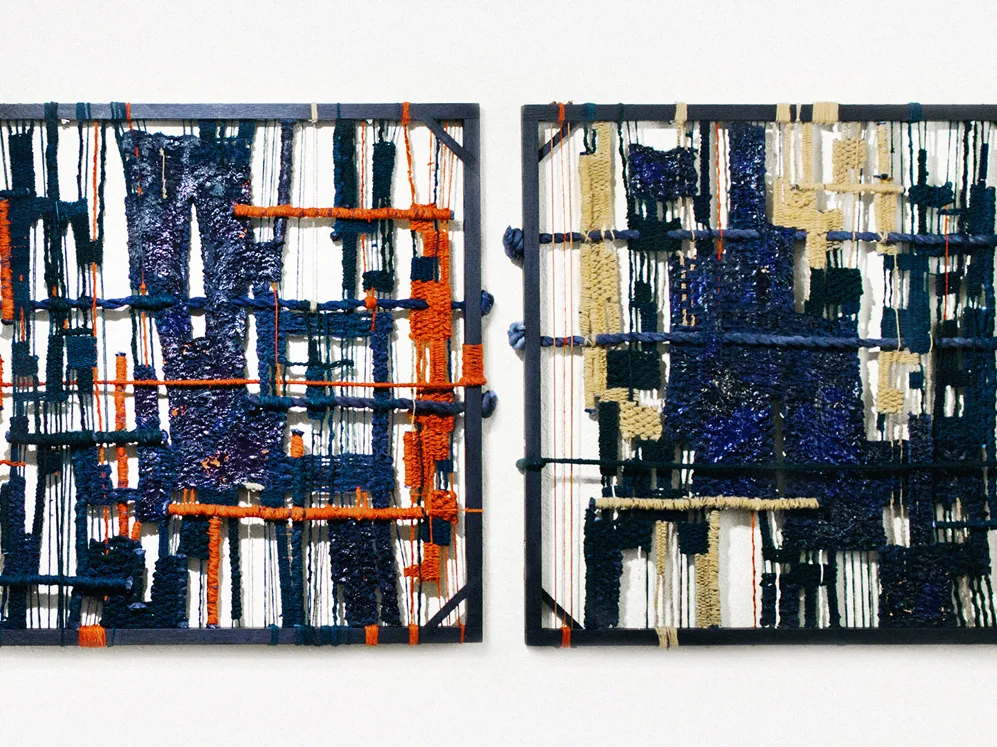
Words Tom OsmondImages Arnaud Montagard
Gerardo Ruiz-Musi spent a stint in Paris building his eponymous leather goods brand before returning to his native Mexico to embark on his career as an artist. His exhibition at Anónimo Marfa, titled “A backwards march / A forward talk,” marks an early step into the art world and melds both his childhood fascination with painting and his career in fashion.
Gerardo Ruiz-Musi: Well, the inspiration for my proposal that I sent for Anónimo is Japanese boro, which is like a kind of patchwork they do in Japan with very old fabrics. It’s a way to honour the art of disrepair and repair. That was the original idea. In the end, we didn't have time to cover the entire room with such a collage of textiles, so this was our interpretation.
Ruiz-Musi: All the pieces at Anónimo Marfa are made of wool that comes from Oaxaca, specifically from a place called El Vallede Teotihuacán, which is about 40 minutes from the center of Oaxaca. I got this wool from the people that live there, from the small communities famous for making rugs. I also hand-dyed the cotton in Mexico. It was important for me to use Mexican materials on these pieces, and I was drawn to them because of the interplay between textures, composition, and color. I started out painting when I was little, and I thought I was going to become a painter but for some reason I didn’t. I think of my work at Anónimo as a re-ignition of that early passion.
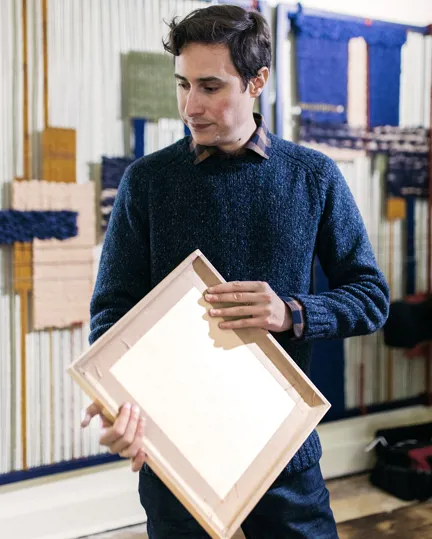
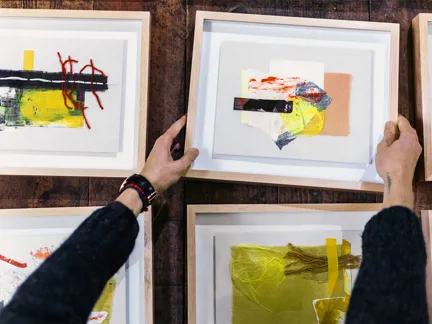
Ruiz-Musi: Well it's my first time here and I've always heard different stories about Marfa. Now that I’m here, it feels like a sanctuary of sorts. I feel very comfortable with the slowness of this place. I really take my time when I sit down and start working on a piece. Especially coming from a place like Mexico City—with its traffic, noise, and pollution. Actually, one of the first things I noticed when I arrived here was the smell. It was such a nice, pure smell. I also think it’s a unique thing to have artists coming from Mexico to Texas and then supporting causes such as the Marfa Education Foundation, The Americas Foundation, and The Big Bend Sentinel, which are linking Mexicans and Americans.
I think it came very organically. I thought I had made a few wrong turns in the past, which I now see weren't wrong--otherwise I wouldn't be here. One thing led to another, and to another, and now I'm here. And my experiences in fashion have informed me in my forward motion.
I feel very inspired by music. Sometimes I think of this series as musical pieces when I work on them--as layers. You know, when you're creating or listening to a musical piece, you have layers upon layers, and for some reason this was always coming into my mind—this layering when you're creating a song or a melody. And if you start deconstructing that song, you can put all these layers and instruments and elements in front of you and examine each part.
More tapestry works. I have an upcoming show in Mexico City that I’m very excited about.
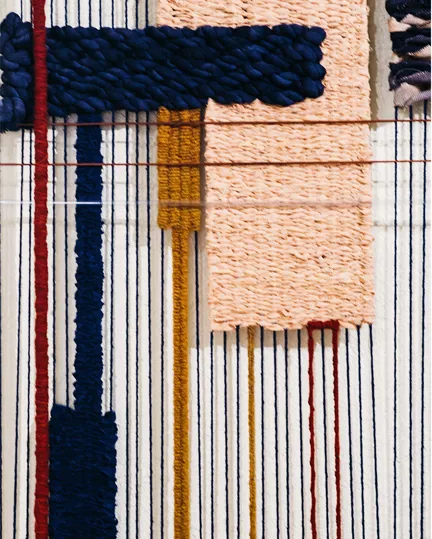
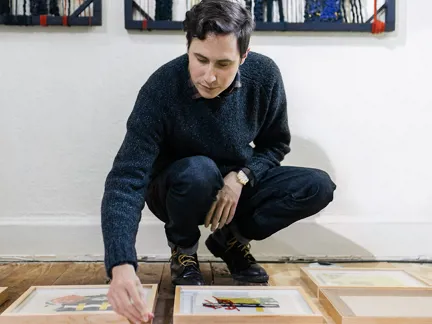
Ruiz-Musi: Yes, I feel I’m entering a new creative period. It's a very organic process to create one of these works. I don't know if it's a process, but I have a very vague idea of what I want to see. I kind of decide the colors in the beginning and I start working, and literally it’s like, I finish one day and the next day I don't know what I'm going to be doing. Sometimes I use vinyl paint or acrylic paint depending on the textile. It's something that I really have to be very focused on. It really comes in the moment. It's feeling and intuition.
Ruiz-Musi: Yes. While I was creating, I was listening to music and for some reason I started writing down lyrics that stood out. And when they asked me to name each of the pieces, I thought, “I don’t know...One, two, three, four, five?” And then I saw the list of my notes and saw these phrases from songs that I was constantly repeating while working. The full series is called “A backwards march / A forward talk” and there’s one piece called “The Thread Unravels, a Merciful Release” after a song Jarvis Cocker wrote for Air. And I think Charlotte Gainsbourg did a cover of that song, called “Somewhere Between Waking and Sleeping”.
Ruiz-Musi: For me, Anónimo worked perfectly. I'm basically a virgin in the art world—I haven’t had a gallery before or someone who could represent me, and this was really very helpful. Being anonymous also brings back the value of the art for itself. Nowadays, people just buy because it was made by this artist who's already selling pieces for millions of dollars. It's sad, but I think most people don't buy based on their emotional reaction to what they see. They're buying because this art advisor told them to buy this artist because it's going to be huge in the next two years. And I think that cheapens the art in a way. Anyway, being anonymous, people just come and see my art because they're just seeing the piece and not the name. It has been very helpful, especially nowadays as people are so snobbish about art. What’s attracting them to my art is a real connection with the piece.
Further Borderlands
On a windswept stretch of Texas desert re-envisioned as a minimalist art mecca, Further Marfa set out on an exploration of borderlands: between art and commerce, city and country, Mexico and red-state USA, somewhere and nowhere.
Further Borderlands
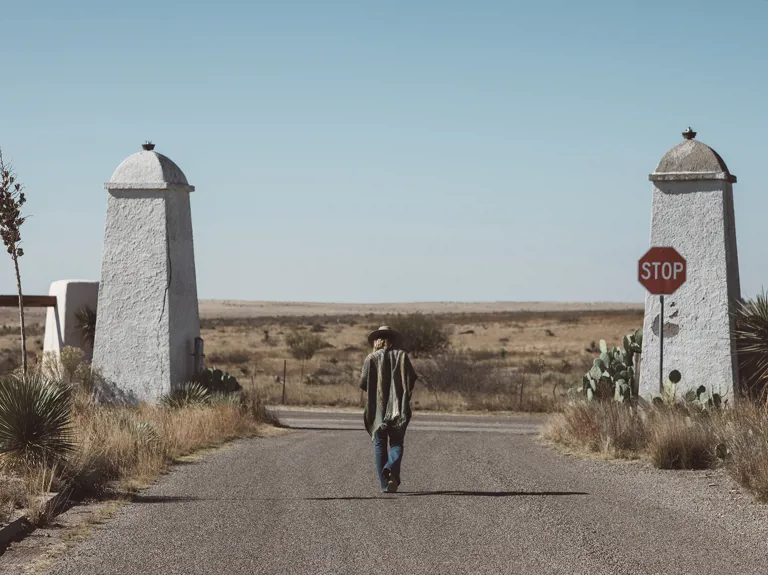
With her pioneering Mexico City-based platform Anónimo, Alejandra Martínez is concealing authorship until a work of art is sold in an attempt to free it from preconceptions.
Further Borderlands
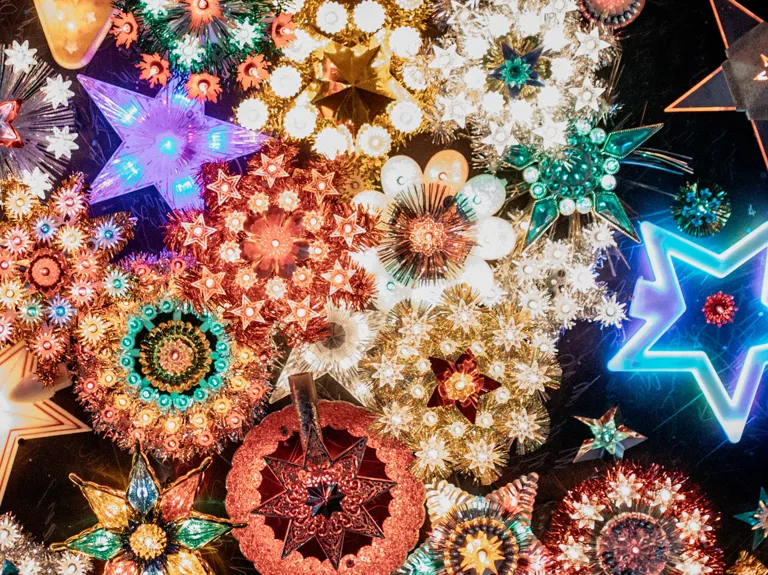
In his latest meditation on memory, beauty, and the passage of time, the influential mixed-media artist transforms illuminated Christmas tree toppers into magical vehicles of light, meaning, and ritual.
Further Borderlands
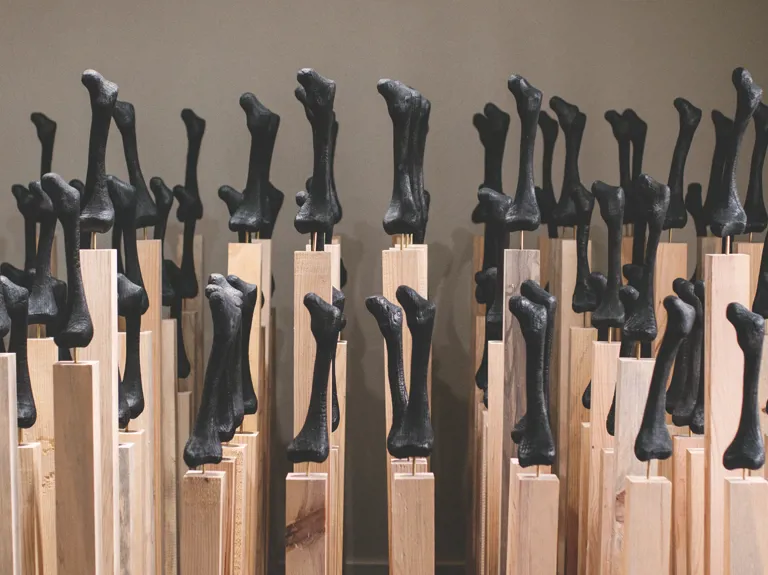
Further speaks to design collective La Metropolitana about their first work of art, an installation that uses wood to evoke the devastation of Mexico’s ongoing drug wars.
Further Borderlands
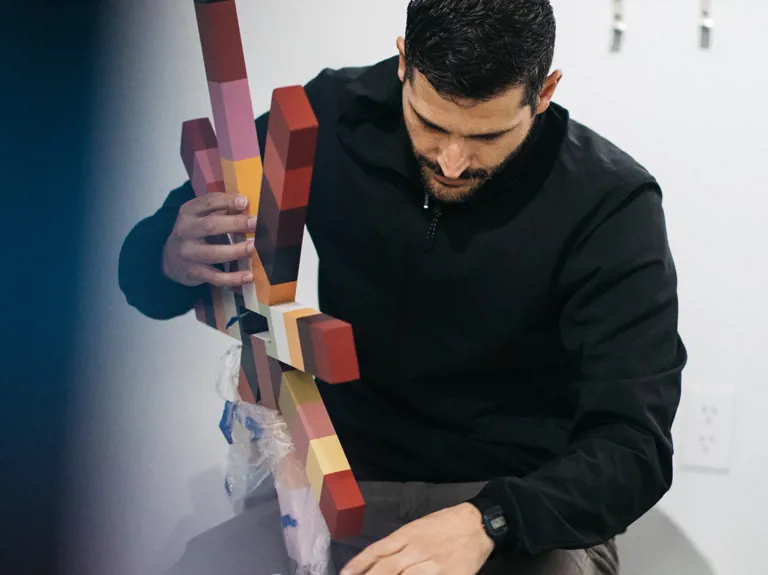
In his installation for Further Marfa, mixed-media artist Erick Meyenberg employs a color study to highlight the ecological dangers of the proposed border wall between Mexico and the United States.
Further Borderlands
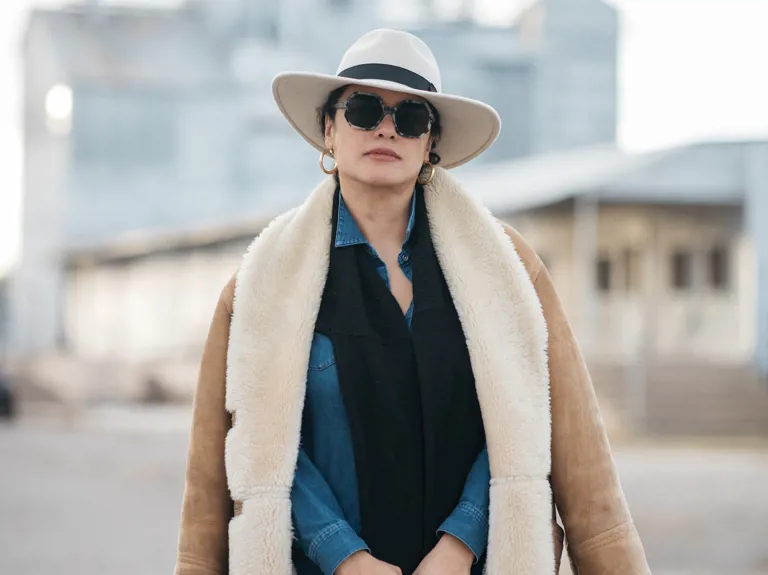
Since opening a decade ago, Pamela Echeverría’s Labor gallery has made waves in the booming Mexico City art world and beyond by highlighting provocative, research-based work that engages with current events.